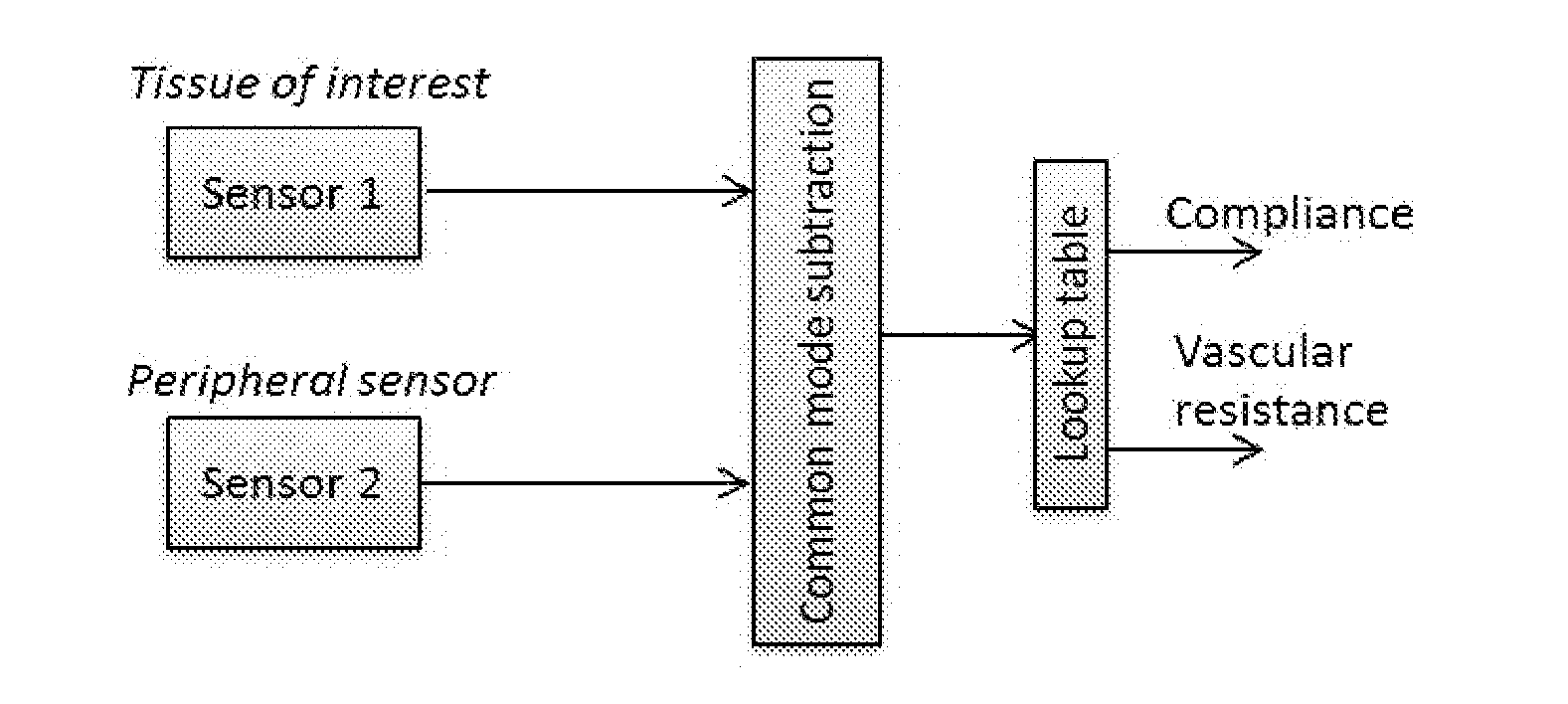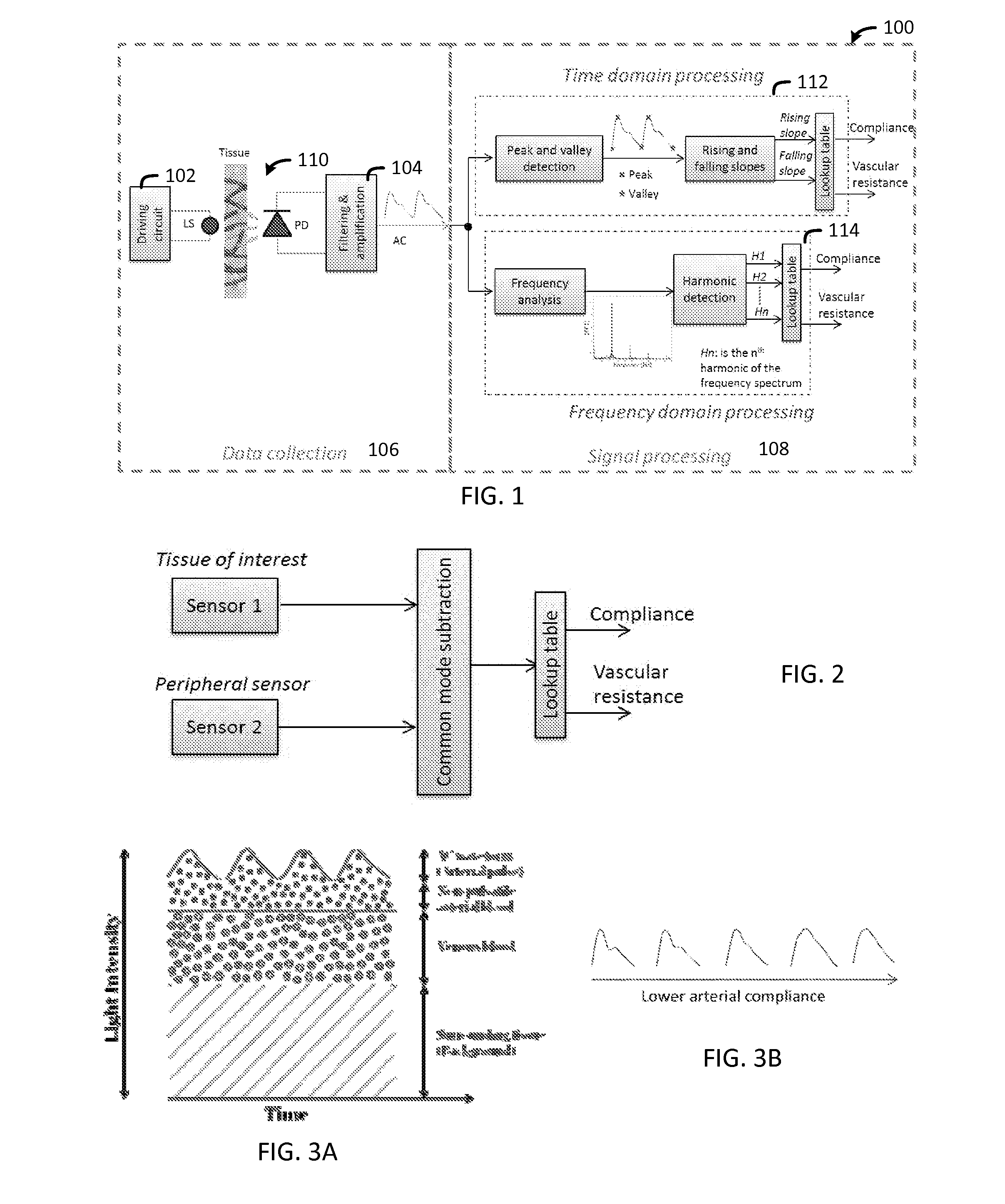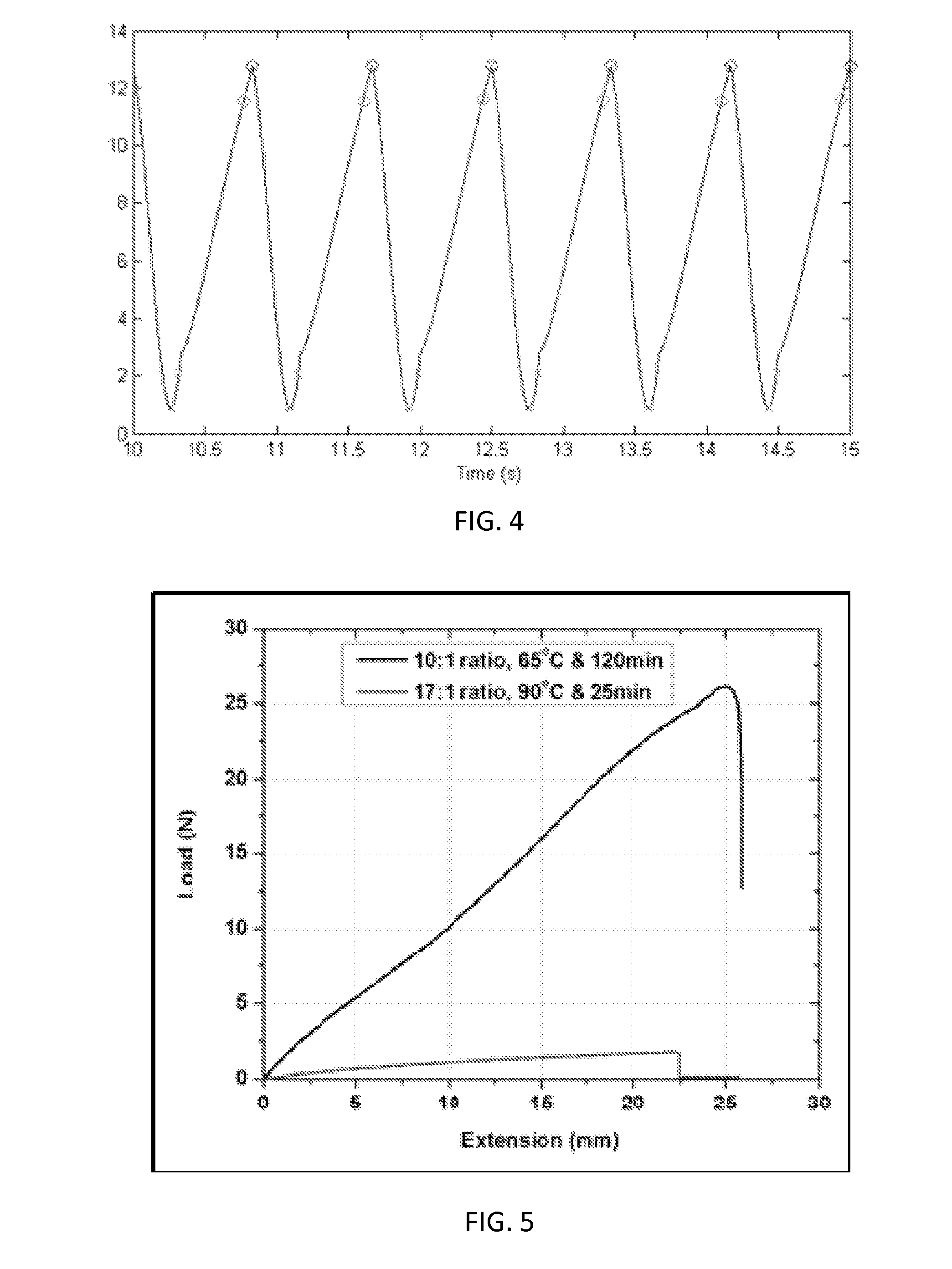Non-Invasive Monitoring of Tissue Mechanical Properties
a tissue mechanical and non-invasive technology, applied in the field of measuring tissue mechanical properties, can solve the problems of insufficient resolution, non-invasive technologies, and inability to accurately distinguish between disease states
- Summary
- Abstract
- Description
- Claims
- Application Information
AI Technical Summary
Benefits of technology
Problems solved by technology
Method used
Image
Examples
Embodiment Construction
[0011]These and other needs in the art are addressed in one embodiment by a tissue mechanical property monitoring system comprising a probe and a main unit. The probe further comprises light sources and one or more photodetectors. The main unit drives the light sources, collects the data from the detectors, and then processes and displays the measurements. In some embodiments the main unit may transmit the data wirelessly to a processing and / or monitoring unit which may comprise a personal computing device (e.g., computer, smart-phone, tablet, and the like).
[0012]An additional embodiment comprises a method for measuring tissue mechanical properties in vivo using light sources, photodetectors, and data collection / manipulation. The method may comprise exposing tissue to light at different wavelengths generated by light sources such as light emitting diodes, measuring the reflectance of the light via a photodetector to produce a reflectance signal. Analyzing and manipulating the reflec...
PUM
 Login to View More
Login to View More Abstract
Description
Claims
Application Information
 Login to View More
Login to View More - R&D
- Intellectual Property
- Life Sciences
- Materials
- Tech Scout
- Unparalleled Data Quality
- Higher Quality Content
- 60% Fewer Hallucinations
Browse by: Latest US Patents, China's latest patents, Technical Efficacy Thesaurus, Application Domain, Technology Topic, Popular Technical Reports.
© 2025 PatSnap. All rights reserved.Legal|Privacy policy|Modern Slavery Act Transparency Statement|Sitemap|About US| Contact US: help@patsnap.com



